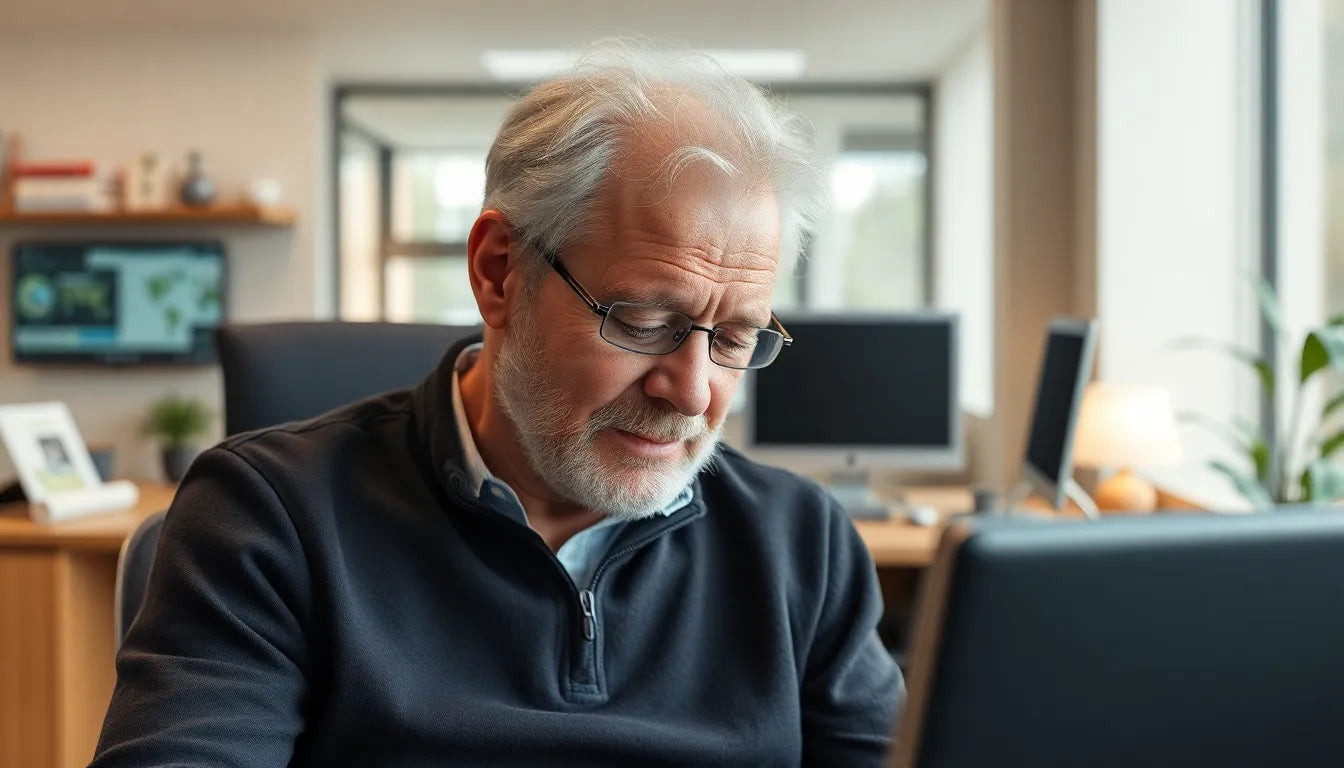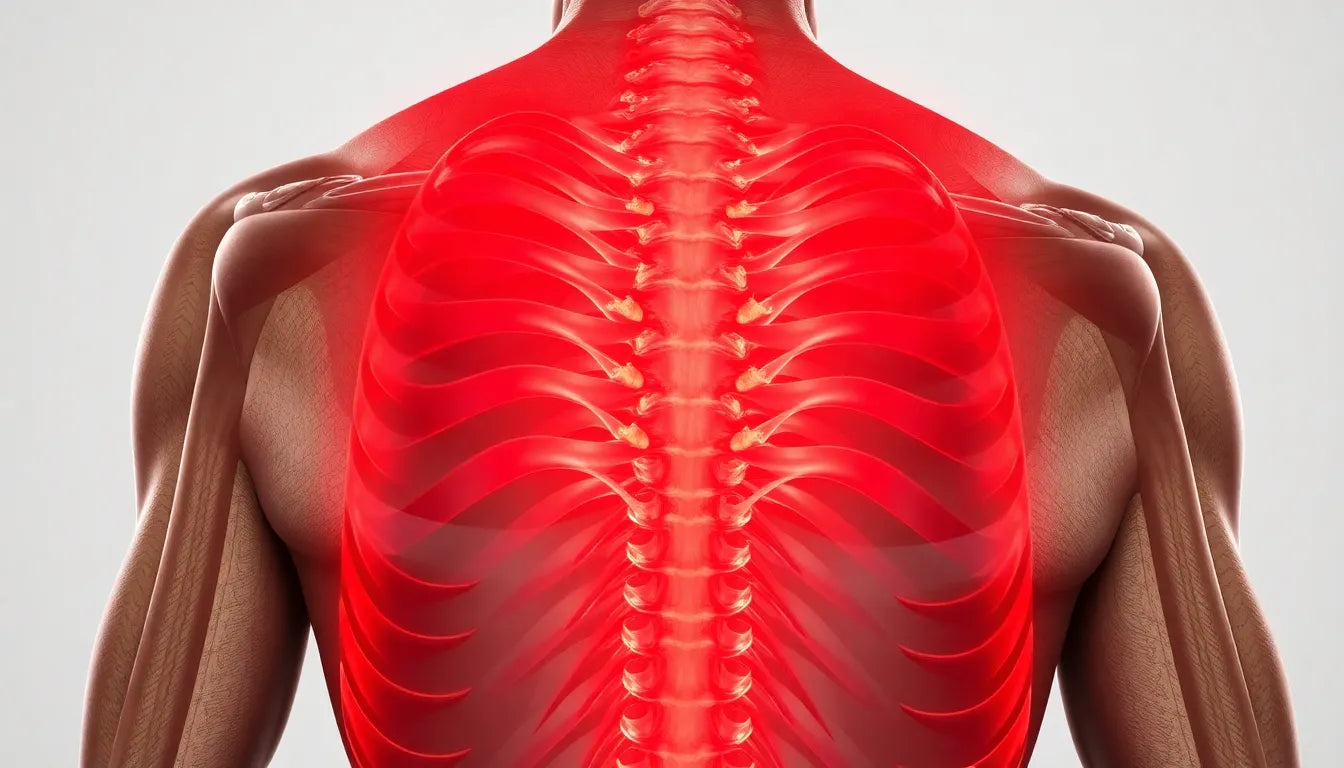Knee pain is a common ailment that affects individuals across all age groups and lifestyles. Whether you're a young athlete, a busy professional, or enjoying your golden years, experiencing discomfort in your knees can be both frustrating and debilitating. Knee pain can arise from a multitude of causes, including injuries, overuse, or underlying medical conditions such as arthritis. Understanding the root of your knee pain is crucial in determining the best course of action for relief and recovery.
Immediate concerns when knee pain strikes
When knee pain suddenly strikes, it can be a cause for immediate concern. The first thoughts that often come to mind are how to alleviate the discomfort quickly and whether the pain indicates a more serious issue. Questions about the severity of the problem, potential treatments, and the impact on daily activities can be overwhelming. It's important to address these concerns promptly to avoid further complications and to maintain your mobility and quality of life.
The importance of addressing knee pain promptly
Ignoring knee pain or delaying treatment can lead to more severe issues down the line. Promptly addressing knee pain not only helps in reducing immediate discomfort but also prevents the risk of further injury. Early intervention can be key to maintaining an active lifestyle and avoiding long-term damage. Whether it's through simple home remedies or professional medical advice, taking action as soon as knee pain arises is crucial.
In the following sections, we will delve deeper into practical steps you can take for immediate relief, explore possible causes of knee pain, and discuss when it might be necessary to seek professional medical advice. By understanding these aspects, you can make informed decisions about your health and well-being, ensuring that knee pain doesn't hold you back from your daily activities.
practical steps for immediate knee pain relief
When dealing with knee pain, taking immediate action can significantly alleviate discomfort and prevent further complications. One of the first steps is to rest and reduce activity. This means avoiding strenuous activities that put additional strain on the knee. Resting allows the inflammation to subside and gives the knee time to heal.
Applying ice to the affected area is another effective method for reducing swelling and numbing pain. It's recommended to apply ice wrapped in a cloth for about 20 minutes at a time, with a 20-minute break in between, to prevent skin damage. This routine can be repeated several times a day, especially after activities that may have aggravated the pain.
Over-the-counter medications, such as ibuprofen or paracetamol, can also play a crucial role in managing knee pain. These medications work by reducing inflammation and providing pain relief. However, it's important to follow the dosage instructions and consult with a healthcare professional if you have any concerns or pre-existing conditions.
In addition to these measures, using supportive gear can offer immediate relief and stability. Knee braces, compression wraps, and orthotic insoles are designed to support the knee joint, reduce stress, and improve alignment during movement. These aids can be particularly beneficial for those who need to remain active despite knee pain.

Lumbar support belt
Provides lower back support and stability to relieve pain or tension; adjustable and can be worn while active or seated.
exploring possible causes of knee pain
Understanding the underlying cause of knee pain is essential for effective treatment and prevention of future episodes. Common causes include injuries and overuse. Meniscus tears, ligament injuries, and conditions like runner's knee or jumper's knee are frequent culprits in active individuals. These conditions often result from repetitive motions or sudden impacts that strain the knee joint.
Chronic conditions, such as osteoarthritis or rheumatoid arthritis, can also lead to persistent knee pain. These conditions involve the gradual degeneration of the knee joint, leading to pain, stiffness, and reduced mobility over time. Differentiating between acute and chronic pain is vital, as it influences treatment strategies. Acute pain often results from injuries and requires immediate attention, while chronic pain may need long-term management strategies.
non-surgical treatment options
For many individuals, non-surgical treatments can effectively manage knee pain and improve function. Physical therapy plays a significant role in this approach, focusing on exercises that strengthen and stabilize the knee. Eccentric squats, gentle stretching, and balance exercises can enhance muscle support around the knee, reducing pain and preventing future injuries.

37 exercises collected in the ultimate exercise book
Physio-designed e-book includes effective exercises for injury prevention, mobility, strength, and rehab.
It's crucial to know when to seek medical advice. Persistent pain, significant swelling, or a limited range of motion are signs that professional evaluation is necessary. A healthcare provider can offer a precise diagnosis and recommend appropriate treatments, which may include imaging studies or more advanced interventions if needed.
In summary, addressing knee pain involves a combination of immediate relief strategies and exploring potential causes. By taking practical steps such as resting, applying ice, using over-the-counter medications, and supportive gear, individuals can alleviate pain and support recovery. Understanding the underlying causes and considering non-surgical treatment options, such as physical therapy, can help manage knee pain effectively and maintain an active lifestyle.
advanced treatment options for knee pain
In cases where knee pain persists despite initial treatments, more advanced medical interventions may be necessary. Corticosteroid injections are one option that can provide significant relief by reducing inflammation directly within the knee joint. These injections are typically administered by a healthcare professional and can be particularly beneficial for individuals with inflammatory conditions such as arthritis.
Viscosupplementation is another treatment that involves injecting hyaluronic acid into the knee joint to improve lubrication and reduce pain. This option is often considered for patients with osteoarthritis who have not responded well to other treatments. Both of these interventions should be discussed with a healthcare provider to determine their suitability based on individual needs and health conditions.
In some cases, surgical intervention may be required to address severe knee pain. Common procedures include arthroscopy, which allows surgeons to diagnose and treat joint problems through small incisions, and knee replacement surgery for extensive joint damage. Surgery is typically considered a last resort after other treatments have been exhausted, and it's essential to weigh the risks and benefits with a medical professional.
preventive measures to avoid knee pain
Preventing knee pain involves adopting lifestyle modifications that reduce stress on the knees and promote joint health. Maintaining a healthy weight is crucial, as excess body weight can increase the load on the knee joints, exacerbating pain and accelerating joint degeneration. Incorporating low-impact exercises such as swimming, cycling, and yoga into your routine can also help strengthen the muscles around the knees without causing undue stress.
Ergonomic aids, such as supportive footwear and knee pads, can provide additional protection and comfort during activities that place strain on the knees. These aids help distribute weight more evenly and reduce the risk of injury. Additionally, ensuring that your environment is conducive to joint health, such as using ergonomic chairs and desks, can prevent unnecessary strain during daily activities.
frequently asked questions
How long should I rest my knee if it's painful?
Rest your knee until the pain subsides, which is typically a few days to a week. However, avoid prolonged inactivity as it can lead to stiffness and weaken the muscles around the knee.
Can knee pain go away on its own?
Minor injuries or strains may resolve with rest and home care. However, if the pain persists, it is advisable to consult a healthcare professional to rule out more serious conditions.
What exercises can I do to strengthen my knees?
Low-impact exercises such as swimming, cycling, and yoga are excellent for knee health. Additionally, specific strengthening exercises recommended by a physiotherapist, like leg raises and wall sits, can be beneficial.
When should I be worried about knee pain?
Seek medical attention if the pain is severe, accompanied by significant swelling or deformity, or if you cannot bear weight on the affected leg.
Are there any home remedies for knee pain?
Besides rest, ice, and over-the-counter medications, some people find relief with heat therapy, elevation, or gentle massage. These methods can help reduce pain and improve circulation.


















